Generators are a necessary evil in today’s world. We need them to provide backup power during outages, but they can cause more problems than they may solve if not properly selected.
Not only can generators be incredibly loud and disruptive, but they can also produce harmful electrical noise and harmonics that can damage your sensitive electronics.
Clean power generators are the solution to these problems. They generate clean power (AC power that oscillates at an exact 60 Hz frequency, without any electrical noise or harmonics such that its voltage waveform is essentially a perfect sine wave), so you can rest assured that your electronics are safe.
Clean Energy Vs Clean Power Generator
Many authors on the internet use these two terms interchangeably. However, the term clean power refers to the quality and characteristics of the received power supply with respect to its voltage, frequency, and Total Harmonic Distortion.
Clean energy, on the other hand, refers to the environmental impact that the operation of the generator produces. You can get clean energy by using fuels with lower emissions or, better still, using renewable energy sources. Our article on different types of generators deals with many types of generator fuels and compares their emission levels. CARB and EPA compliances guarantee their conformance to the existing regulations with respect to emissions.
Dirty Power: Meaning, Effects & Causes
As touched upon above, a clean alternating current power must follow a pure sine wave. However, the external disturbances distort this original and pure waveform to a non-sinusoidal one. A non-sinusoidal wave is made up of large numbers of sine waves of frequencies that are multiples of the frequency of the pure wave. These individual sine waves that add up to form the non-sinusoidal waves are called harmonics.
Total Harmonic Distortion is a measure of the degree of distortion of the original waveform. Greater this number, the more the distortion in the waveform.
Effects of Dirty Power
Dirty power manifests itself in many ways, causing disruptions, malfunction, or damage to your expensive appliances. Some of the bad effects of a dirty power supply are listed below. The list is a general one about dirty electrical power. However, the majority of factors apply to generator power also.
- Nuisance trappings of circuit breakers.
- Lower power factors.
- Continuously blinking or flickering lights.
- High levels of noise and heat or premature failure of a transformer.
- Excessive noise and vibrations from the equipment.
- PCB failures in personal computers and other sensitive electronic devices.
- Electrical panels, neutral wiring, and other related power distribution equipment are overheating.
- Unexpected motor failures or their contactors dropping out.
- Higher emissions or poor efficiency.
- Reduction in the system capacity.
If you are experiencing any of the above, you should get your power quality checked and look for the likely reasons causing this degradation. Once you have figured the reasons out, you will be able to finalize your strategy for cleaning up your generator power.
Measurement of the Power Quality (PQ)
The electromagnetic disturbances impacting the correct operation of the appliances are categorized into conducted and radiated disturbances. These are of the following types:
- Low-frequency (< 9 kHz)
- High-frequency (> = 9 kHz)
- Electrostatic discharge
Measurement of PQ in most cases involves recognizing the low-frequency conductive type disturbances as listed below. It may, however, generally not be necessary to measure each type of disturbance.
- Harmonics and inter harmonics
- Temporary overvoltages
- Transient overvoltages
- Voltage dips and interruptions
- Voltage swell
- Voltage fluctuations
- Voltage unbalance
- Power frequency variations
- DC and AC networks
- signaling voltages
The above types of disturbances can be classified as affecting the voltage’s magnitude, frequency, waveform, and symmetry. Anyone of the above disturbance can modify one or more of the above characteristics. You may also classify the disturbance as permanent, semi-permanent, or random in nature.
Causes of Dirty Power in Generators
Dirty power represents a diverse range of power problems caused by an even more diverse range of power issues or root causes. Most such issues arise due to limitations in the voltage and frequency regulation capabilities of the generators and the use of non-linear loads by the consumers.
Let us briefly introduce you to some of these major reasons that may impact the power quality and may even disrupt the supply. This will eventually enhance your understanding of the appropriate solutions you may need to adapt to overcome the entire issue.
Portable Generator Types
The ability to regulate the voltage and frequency of the generated AC power is the key factor in differentiating the types of portable generators. There is a direct trade-off between the cost and the degree to which a portable generator regulates its power. You, as a user, need to thoroughly understand the requirements of the load that you intend to power.
For example, if you just want power universal motors in power tools and incandescent lamps on a construction site or RV appliances, you require minimal power regulation as these loads are very forgiving. There is no benefit to incorporating expensive power regulation mechanisms in such generators.
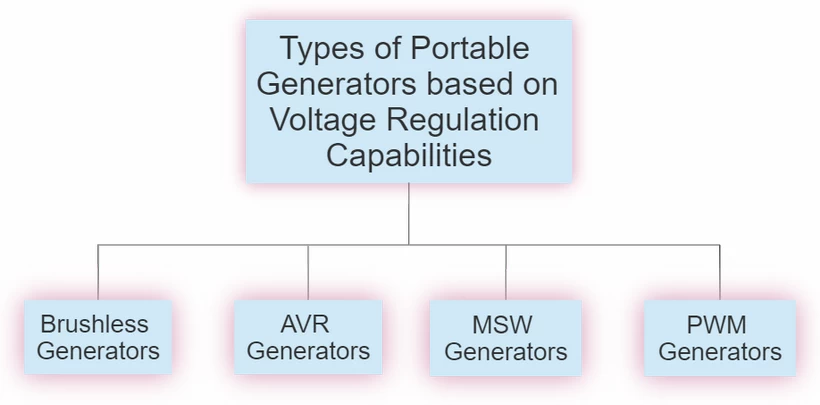
Four types of portable generators are available on the market to cater to different power regulation requirements: Brushless generators, AVR generators, MSW (modified sine wave) inverter generators, and PWM (pulse width modulation) inverter generators.
Brushless Generators: Most common, with inexpensive construction and with least reliable voltage control. They can’t react quickly to varying loads. This results in lower power output called a brownout or higher power. This badly affects the voltage-sensitive equipment and can damage the sensitive electronics. Brushless units can produce a voltage waveform distortion of about 23%.
AVR Generators: They use Digital or analog AVRs to control the output voltage regardless of the load. The Automatic Voltage Regulator senses the output voltage through a separate sensing coil in the stator, compares it to a preset reference, and varies the excitation current to control the magnetic field and hence the output voltage. AVR generators may have a voltage distortion of 19.5%.
MSW Generators: Also known as cyclo converters, modified square wave, and pseudo sine wave generators, these generators use inverters but produce a modified square wave instead of a perfect sine wave to cut down the costs.
This waveform is cleaner and more stable than AVR generators, depending on the number of steps in the inversion process. They can still cause overheating of sensitive electronics and are unsuitable for equipment requiring correct peak voltages like battery chargers.
A typical diagram for an MSW generator is shown below.
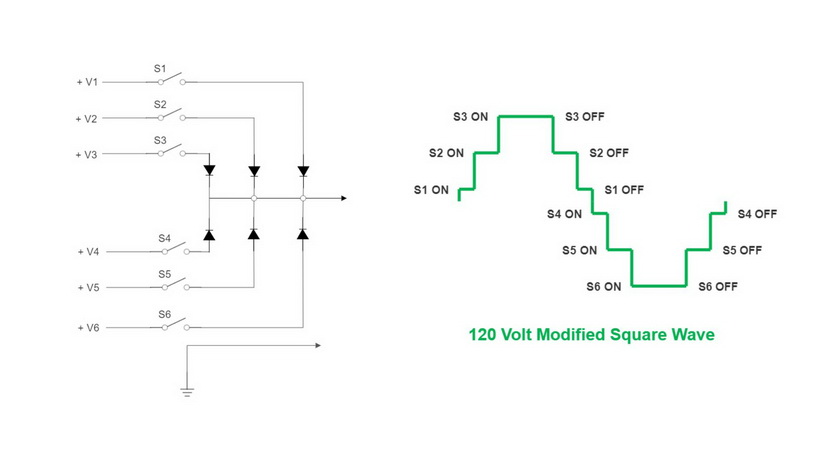
PWM Generators: They use more sophisticated pulse width modulation techniques to switch IGBTs at high speeds to produce near-pure sine waves with voltage distortions in the range of 2.5% to 5%.
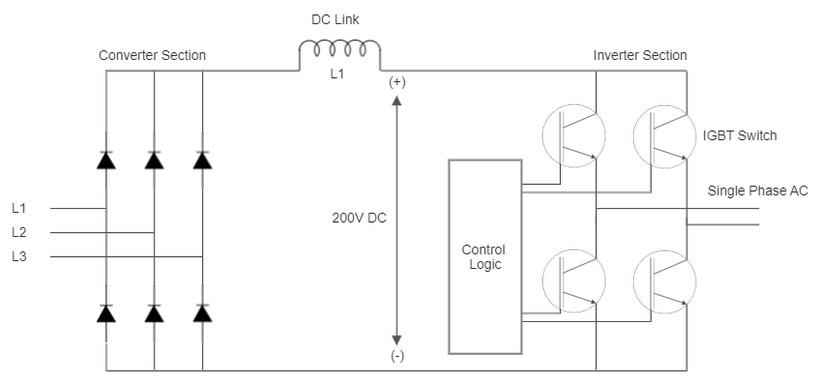
Voltage Regulation in a Generator
The voltage regulation is the ratio of change in voltage at the generator terminals when it goes from no-load to the full load divided by the full load voltage.
VR = (Voltage at no load – Voltage at full load)/ (Voltage at full load)
It is a measure of the voltage that drops in the stator winding due to impedance. The current flowing through the receiving end terminals is zero at no-load conditions. So, the voltage drop across the stator windings is zero making the entire generated voltage appear across the terminals.
Brushless Generators: They do not have brushes or springs to inject exciter current into the rotors and rely only on the inherent magnetic strength of the rotor magnets. Additional load reduces the terminal voltage until a state of equilibrium is reached. The equilibrium point depends on the rotor field strength and the load.
AVR generators: The working principle of automatic voltage regulator-type generators was explained above. The excitation current is fed to the rotor through slip rings and brushes. Its value depends on the load on the generator.
The speed with which an AVR responds decides the voltage overshoot and the number of oscillations of the voltage output before the final stabilization. Too large an overshoot can damage sensitive equipment, and too large a transient dip can lead the generator to a stage where it is unable to recover from the sudden load.
The voltage dip is always greater for a slow response system, and the recovered steady-state value is also lower than for a fast response system.
An average analog AVR system can ensure a voltage regulation of ± 5% of the mean voltage as against ± 3% by the best analog AVRs. Digital AVRs can, however hold the voltage stable within ± 1%.
This is because conventional analog AVRs use a feedback loop to sense the output voltage through a sensor winding and correct the deviations. In contrast, Digital AVRs (DAVR) use control software with a sampling rate of a few microseconds to quickly and accurately detect the deviations and make a correction.
DAVRs use an independent power coil totally separated from the stator main winding to eliminate the effect of transient loads and brownouts.
Frequency Regulation in a Generator
Similar to voltage, the speed of the generator also increases or decreases with varying loads. The speed has a direct relation with the frequency of the power output. Hence the frequency also changes with the varying load. The power quality is directly impacted by the quality of the engine, its smooth running, and its ability to maintain a constant speed.
This means the generator should possess the ability to recover quickly after the application of a transient load. While voltage regulation is affected by the properties and size of the alternator, frequency regulation is dependent on the ratings and properties of the engine.
AC Frequency Governors
Conventional generators need AC frequency governors to regulate the governor speed and hence the frequency. Governors compare the engine speed with the internal reference signal and adjust the engine throttle through a mechanical linkage.
Larger generators have a magnetic pickup to sense the rotation of the core. However, most portable generators measure the frequency of the output voltage in the AVR unit to carry out the regulation. In reality, frequency governors work properly in portable generators that are finely tuned, well-maintained, and prepped up for each shoot.
- Old fuel will gum the carburetors up if your generator has been idle for a long.
- The generator battery must be fully charged for the governor to work properly.
Harmonics or Waveform Distortions.
You had a brief introduction to harmonics in our section on the meaning of dirty power above. Let us continue further.
The waveform distortion can occur due to the generator design and the use of non-linear loads.
Impact of Generator Design
As most portable units have two pole rotors, all even number harmonics currents cancel out, leaving only odd number harmonics. As the increasing number of odd harmonics with capacitive loads are added, the voltage waveform becomes increasingly square with higher levels of THD.
The voltage waveform distortion can cause errors in voltage regulation and inaccurate instrument readings, while current waveform distortion causes generator and load overheating leading to deration in generator capacities.
Theoretically, evenly distributed field and stator windings operating in a uniform magnetic field will produce a pure sine wave. In reality, both magnetic field and winding distribution are non-uniform, leading to voltage waveform distortions.
In a conventional AVR generator, the physical shape of the rotor pole head has a direct bearing on the shape of the waveform. A square pole head will lead to a square flux wave. The extent to which a manufacturer shapes the pole heads properly to match the sine wave, determines the waveform distortion factor. Of course this comes at a cost.
Non-linear Loads
The increased use of non-linear loads like personal computers and other sensitive electronics results in more harmonic currents in the electrical distribution system. These harmonic currents produce harmonic voltages when they flow through the circuit’s non-linear load or other impedances.
The voltage is least distorted near the source and becomes more distorted as it approaches load because load impedances are much higher than the source impedance.
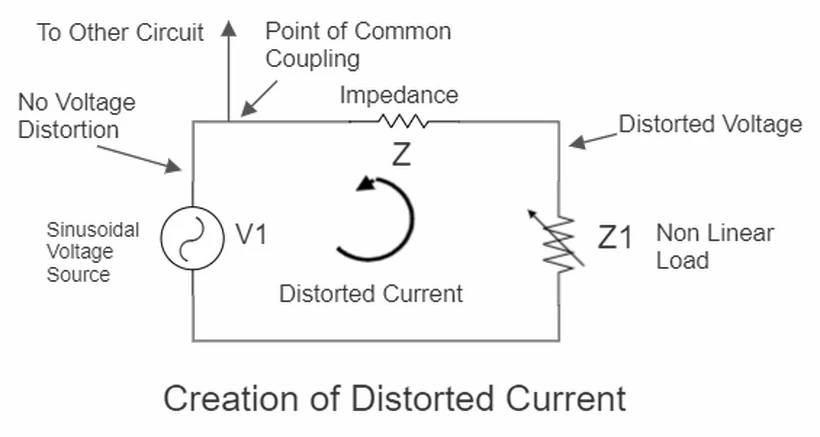
Portables typically have 5 to 100 times higher internal reactance to an instantaneous change in load than a grid transformer. Hence non-linear loads that appear to work fine on utility power will be impacted on a generator set.
How to Clean up the Generator Power
With the above background in place, let us now deep dive into the following tips and methods to improve your generator supply power quality.
#1 Buy an Inverter Generator
If you are yet to purchase a generator and want to use your portable generator to provide electricity to sensitive electronics such as laptops, mobile phones, tablets, LCD / LED TVs, digital microwaves, etc., you may consider going for an inverter generator.
Conventional generators produce electricity with a THD value in excess of 10%. Inverter generator, on the other hand, provides a cleaner power with THD lower than 5%.
How does an inverter generator work?
Inverter generators, like any other portable generators, burn the fuel to generate AC electricity. This AC current is then rectified into the DC electric current. The rectification process is also known as a conversion, and the set of devices carrying out the rectification is commonly referred to as a Converter.
This DC current is then smoothened with capacitors and changed back to an AC current through a process known as Inversion by a set of devices collectively known as an Inverter. The entire magic happens during the inversion stage, which changes the dirty power into a steady power with a nearly pure sine wave.
The complete process of rectification and inversion is also called the conversion inversion process, and in some literature, the double conversion process. The process has been explained in detail in our article on “What Is An Inverter Generator?“
In comparison to a standard portable generator, the inverter generators are
- Quieter and more compact.
- More energy-efficient. It has a higher fuel efficiency because of its ability to adjust the engine speed depending on the load conditions. The traditional generator runs at a single speed irrespective of the number and wattage of the appliances it feeds.
- Provides clean power with a THD of less than 5%.
- They have a limited maximum wattage range of about 7000 W against traditional units that can produce more than 17,000 W.
- They have the ability to work in parallel with other similar inverter generators. This feature, in a way, makes up for their limitation in wattage ranges.
- They have a higher initial cost but tend to make it up with reduced running costs.
If you already own a traditional portable generator, the following solutions will help you obtain cleaner generator power.
#2 Buy an Uninterruptible Power System (UPS)
UPS comes in many different design types, known as UPS topologies. Each of these will meet the voltage requirements of the electronics they feed but vary in demand on the battery and the conditions they kick into service.
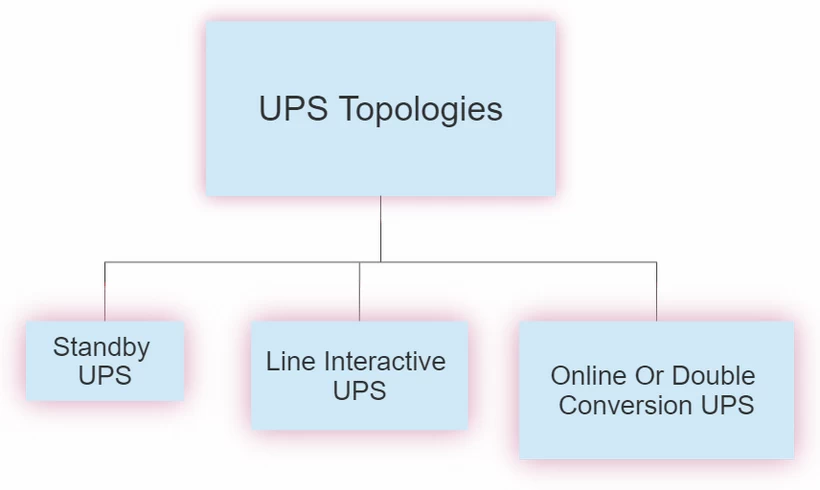
Out of the many possible topologies, three primary ones, namely (a) standby or off-line, (b) line interactive (c) online or double conversion type UPS, are of particular interest for our application. You can briefly learn about them in the following sections.
Standby UPS
This configuration, with the most basic circuitry and features out of the three topologies, comes with the lowest price tag. The main features include
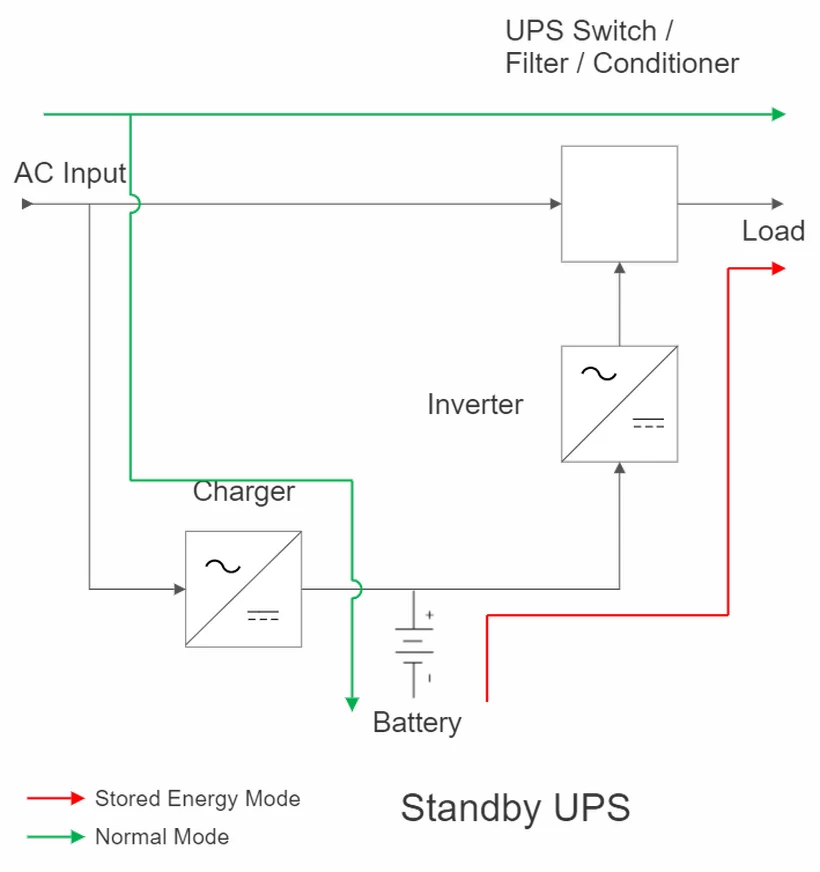
- The equipment is fed from the utility or generator power, while the UPS provides continuous surge protection and RFI filtering.
- It continuously monitors the input voltage. On failure of input voltage or fluctuation outside the preset limit, the standby UPS takes over and switches on the inversion process to feed clean power to the load.
- On the restoration of normal power or when input voltage returns to the preset limit, switches back to normal mode from the battery mode. This transition typically takes about 4 to 10 ms.
- Standby UPS protects against minimal power supply issues.
- During normal mode, it does not provide proper regulation of output voltage.
- Standby UPS will cease to feed the loads in case of inverter failure, overload, or when it encounters loads with high start-up currents.
- Better suited for home, small offices, and point of sale applications.
Line Interactive UPS
In addition to the features highlighted for the standby UPS, line-interactive UPS provides better filtering and output voltage regulation. The main features are

- It does not completely eliminate the incoming interference but reduces the damage by clipping the peaks and valleys of the incoming voltage’s surges, spikes, and sags.
- It has a multi-tap variable-voltage autotransformer that functions similarly to a buck-boost transformer. The autotransformer adds or removes power coils of wire to increase (if incoming voltage is low) or decrease the output voltage (if incoming voltage is high).
- It is common for an autotransformer to correct the voltage in the range from 90V to 140V and switch to the battery if the incoming voltage is outside this range.
- The autotransformer, in a way, acts as a voltage regulator.
- Balance features and functions are similar to the standby UPS in terms of switching to battery mode and back, response to inverter failure, overload, and loads with high starting wattage.
- These are commonly used to support distributed electronic loads lower than 10 kVA.
- Some manufacturers call them “digital online,” “inline,” or “online interactive.” However, these terms do not mean a completely online model that we will discuss next.
Online or Double Conversion UPS
Online UPS units offer the highest level of protection against dirty power. They use the same double conversion technology used by the inverter generators to completely reconstruct the output voltage that is
- Free from spikes and voltage variations of the incoming voltage.
- The output voltage and frequency are precisely controlled to give a stable sine wave.
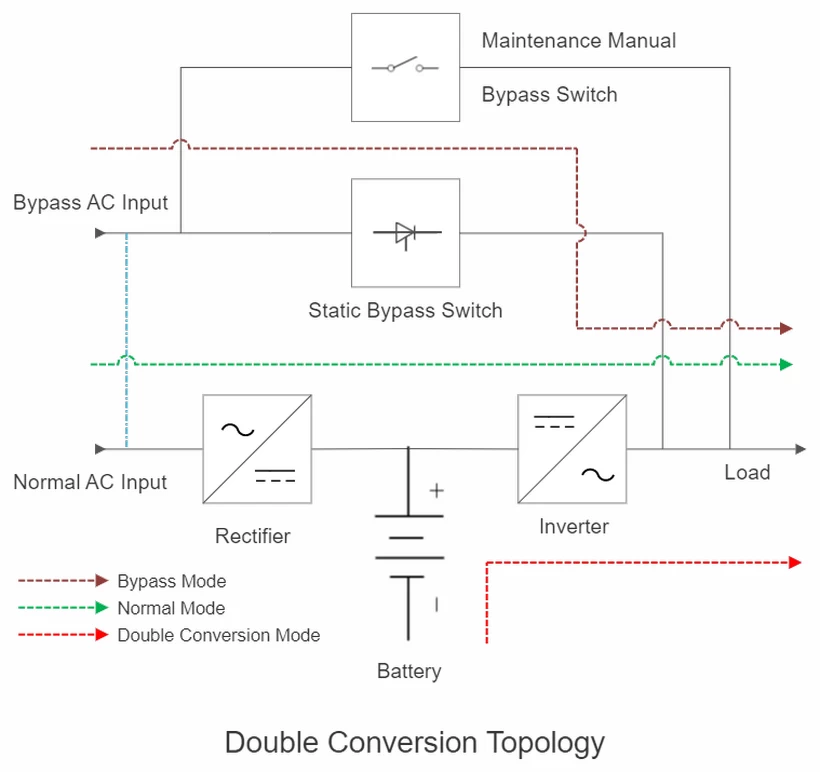
Unlike standby and line-interactive units, loads are always fed by the inverters. In case of inverter overload or failure, the unit uses the static bypass switch to transfer the load back to the main’s power. It provides continuous and total power conditioning.
The difference with the inverter generator lies in the use of a battery like in standby and line-interactive UPS to provide backup to the critical loads without any break in the case of mains failure. However, online UPS comes at a much higher cost than other types of technologies.
#3 Using an Inverter
Having spent substantial money on buying a portable generator of a reputable brand, you may not be willing to spend on inverter generators or UPS and look for cheaper alternatives.
One of the options is to use an inverter for sensitive devices and continue using your existing generator power for others. The inverters pass the power through to the connected equipment and charge their batteries in normal conditions. During power outages, the transfer relay switches the power output to the inverter fed by the batteries.
Such systems contain an inverter, a charger, and a battery backup. The terminal blocks on such inverters are hardwired and connected to an auxiliary electrical panel containing critical electrical branches. This panel is isolated from utility lines and connected to the inverter during grid failures. The battery bank is scalable for the desired printing.
However, such systems will last only till the batteries are in the charged condition and not suitable for long-term emergencies.
You can also get them as a completely portable unit with internal batteries with output receptacles if your power requirements are very low.
#4 Other Alternatives
While other alternatives cannot substitute the above options, they can only provide protection to the electronics.
A surge protector with components like MOV, gas discharge tubes, TVS, etc, with a circuit breaker, can protect your electronics from power surges by blocking them or shorting the current. But it cannot clean the incoming dirty power.

Best explanation by far covering the ways to clean up generator signals. Unlike pretty much every other blogger who copies and pastes the same useless basic info you go into depth and give reasons for and options for different methods. Thank you for clearing up the issue for me!